I know… this is over three months behind, but I plan to do a speedy get up to date over the next two weeks so you will have lots of reading to do!
Friday 28th October to Wednesday 2nd November
The day after returning from our trip to the Amazon we caught a TransMilenio bus to the last stop on the line, the Portal Norte, and then a bus 50 km north to the small picturesque town of Zipaquira – old houses with clay tile roofs and balconies overhanging the narrow streets, in the large central plaza the Cathedral of San Antonia de Padua and Spanish Colonial buildings.
We had however come to see the Salt Cathedral, ‘The First Wonder of Colombia’, and on our way joined up with a young Japanese woman, Ryoko, who was travelling through South America and who had the right app on her phone to direct us there. At the entrance we bought our tickets and having got a senior discount Hugh was particularly outraged that we were considered too old and therefore unfit to visit the narrower mines deep in the earth. Long tunnels have been dug over the centuries horizontally into a hill made of halite (rock salt) to extract the salt deposited there 250 million years before, the first mining originally done by the Muisca people as early as the 5th century BC. It is a big tourist attraction and we joined a group with an English speaking guide, although her thick Colombian accent made her incomprehensible to most of the French and German tourists, and entered down a long wide tunnel into where the miners had carved crosses, altars and the twelve stations of the Cross in the tunnels which were illuminated eerily and ended in a huge cathedral with a large cross at the back. It was an impressive place, stretching for miles into the mountain and with layers of tunnels above and below us that had been dug over the centuries. The original Salt Cathedral was completed in the 1950s but later declared unsafe, so the current one was built 200 feet below the original one and opened in 1991. We watched a 3D film about how the rock salts had been formed geologically and how the salt mines had initially been developed by the indigenous peoples who lived there, and we visited the underground shopping arcade selling emeralds and local handicrafts.
The following day we visited the Sunday market at Usaquen, a pretty suburb of Bogotá. There were street stalls in the crowded streets where we haggled, not very successfully, for woven bowls, a hammock, coloured bags, bracelets, honey and preserves to buy as presents.
We sat in the park there listening to a Colombian band play amazing Latin rhythms and bought their CD (which when we listened to it at home sounded nothing like the music they’d been playing).
After this we visited Clare, who we’d met staying in the lodge on our trip to the Amazon, and her husband Andy who was head of security for the British Foreign and Commonwealth office in Bogotá. They live in a modern high rise apartment block near the embassy in one of the smarter suburbs of Bogotá. They told us stories of life in Colombia such as the British Ambassador getting lost for 15 hours in the Amazon rainforest whilst chasing butterflies, and how, despite the improvement in the situation here, FARC is still very active in Bogotá and throughout the country and runs protection rackets in the capital with petrol bombing of premises that don’t pay up. Large swathes of the Amazon jungle are being destroyed to grow coca plants for the production of cocaine, camouflage nets used so that the coca plantations can’t be seen from the air. Bogotá is a city designed for a population of 2.5 million but is occupied by over 9 million, in part due to so many people displaced from the countryside by FARC guerrillas. One of the staff at the British Embassy was able to source the best coffee in Colombia – organic, rich and mellow. Andy had taken 20 bags of this coffee back to the UK in his hand luggage but British customs had been suspicious about the contents and whether it might be another renowned Colombian export, so sampled random packets before allowing it through. He was kindly able to obtain some packets of coffee for us too which were chauffeured over to our hotel the next day in an embassy car. Clare told us how she had sat in their apartment a few months ago when the whole block shook violently due to one of the earthquakes they get infrequently in Bogotá. That night as we sat in bed in our hotel the room started to move – an earthquake!
It was Halloween the next day and the streets of Bogotá were full of witches, zombies and ghouls as we did a day of sightseeing around the old part of Bogotá, the Candelaria, full of narrow streets, colourful houses and colonial buildings housing the university, museums, restaurants, hotels and libraries. In the central square, the Plaza de Bolivar with the main Cathedral, was an encampment of tents set up supporting peace in Colombia. Hugh got chatting to a young man who explained they were trying to pressurise the government to do a deal with FARC and not allow the opposition to jeopardise it, as well as trying to prevent multinational companies from being allowed to develop mining that would destroy the Amazon rainforest.
We visited the Botero museum, works donated by the artist Fernando Botero, 123 of his own paintings and sculptures of fat people and animals plus works from his collection by other artists – Picasso, Dali, Monet, Matisse, and other impressionists. Botero is now 84 and lives in Paris with his third wife, although he describes himself as “the most Colombian of Colombian artists”. It was a wonderful exhibition, thoughtful, amusing, uplifting.
In the late afternoon we caught the cable car up Mount Monserrate to see the church at the top, the view down over Bogotá and especially the night lights. We had considered walking up but quickly agreed that the cable car option was the more appealing. It was hazy as the sun started to set and very cold and windy. We looked around the church, the Santuario Del Señor Caido de Monserrate. Inside it was particularly garish and ornate. The café was closed so we decided to splash out and eat at the restaurant there and had the most delicious meal sitting on the covered balcony of the restaurant looking down over the lights of the city extending along the plain below as night fell.
On our last day in Bogotá we revisited the wonderful Gold Museum and whilst there looked at an exhibition of ‘Molas’, reverse appliqué embroidery made by the indigenous people of Colombia and Panama, and particularly, as far as we were concerned, the people of the San Blas islands which we would be visiting after leaving Colombia. They were beautiful and incredibly intricate with tiny stitching.
On November 2nd we caught a flight back to Gatwick for two months at home over Christmas. We had loved our time in Colombia.


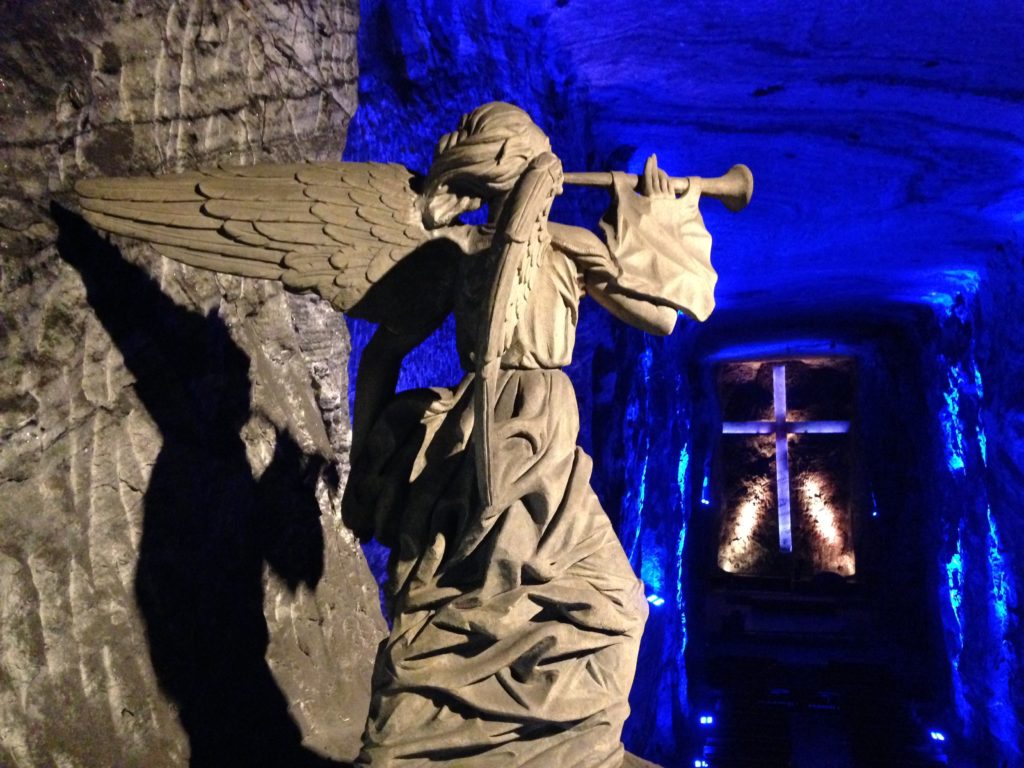
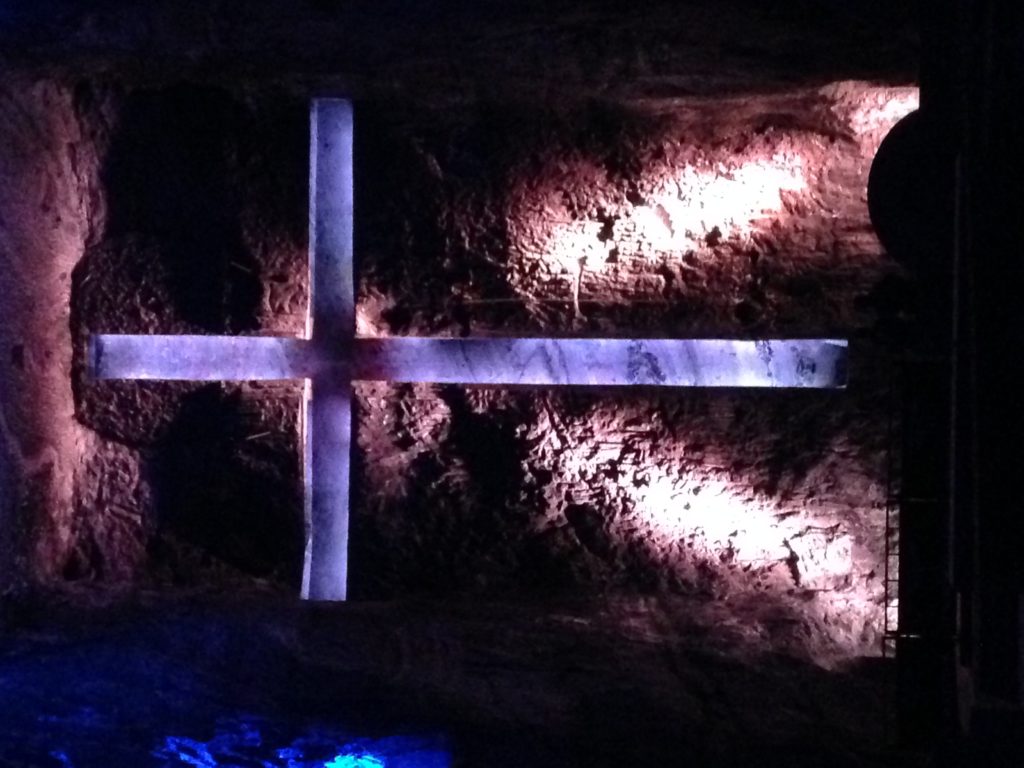
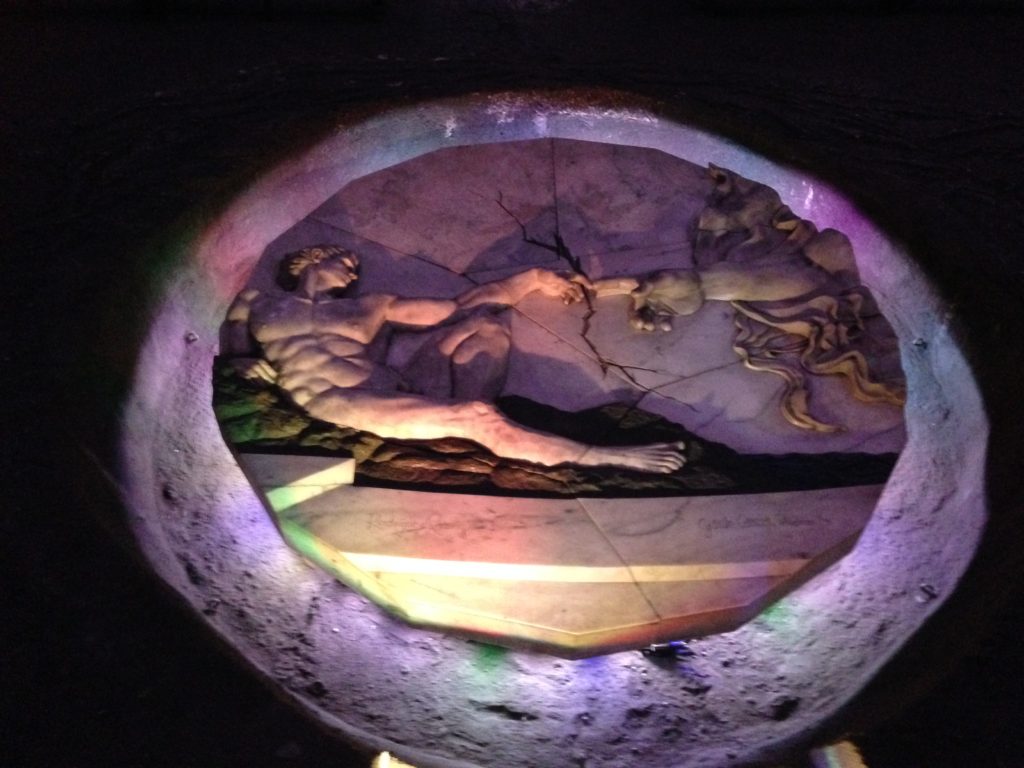
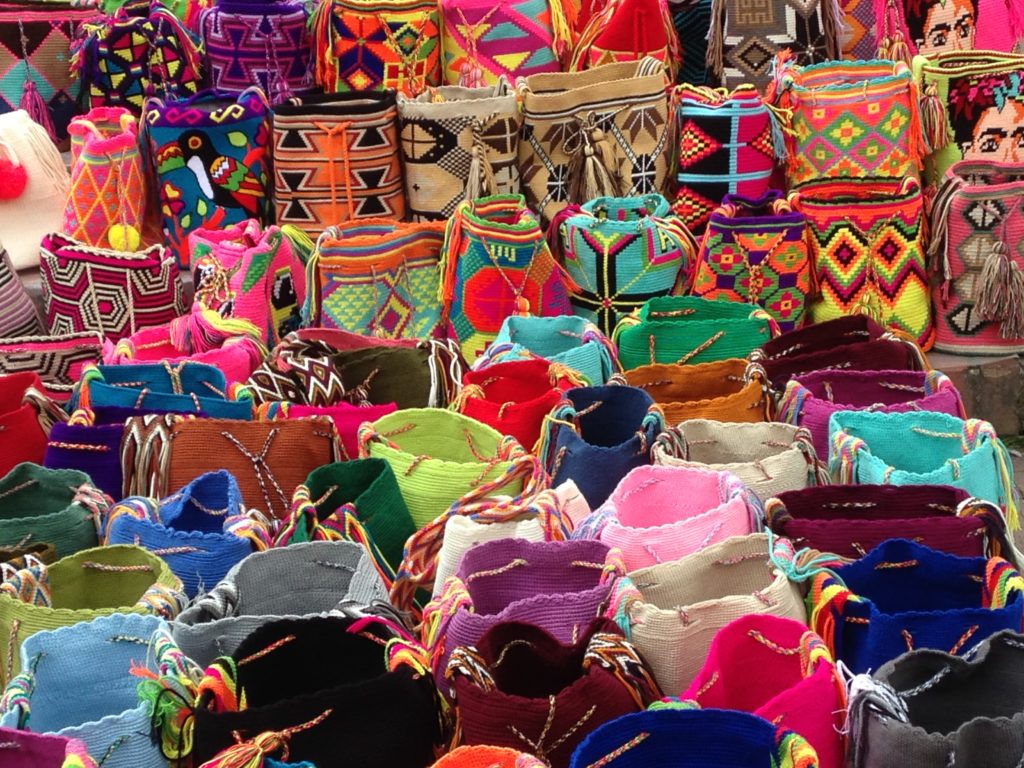
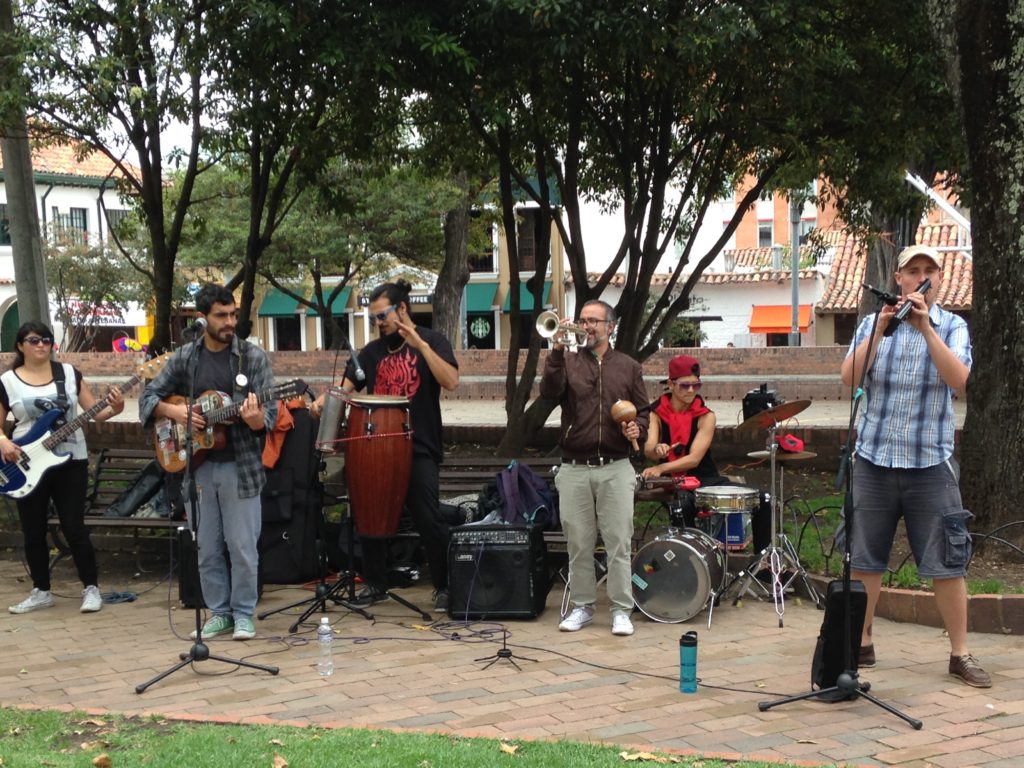











0 Comments